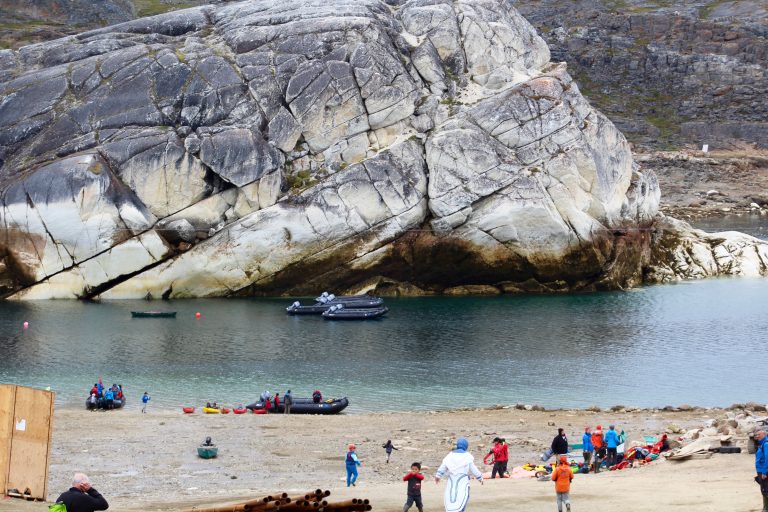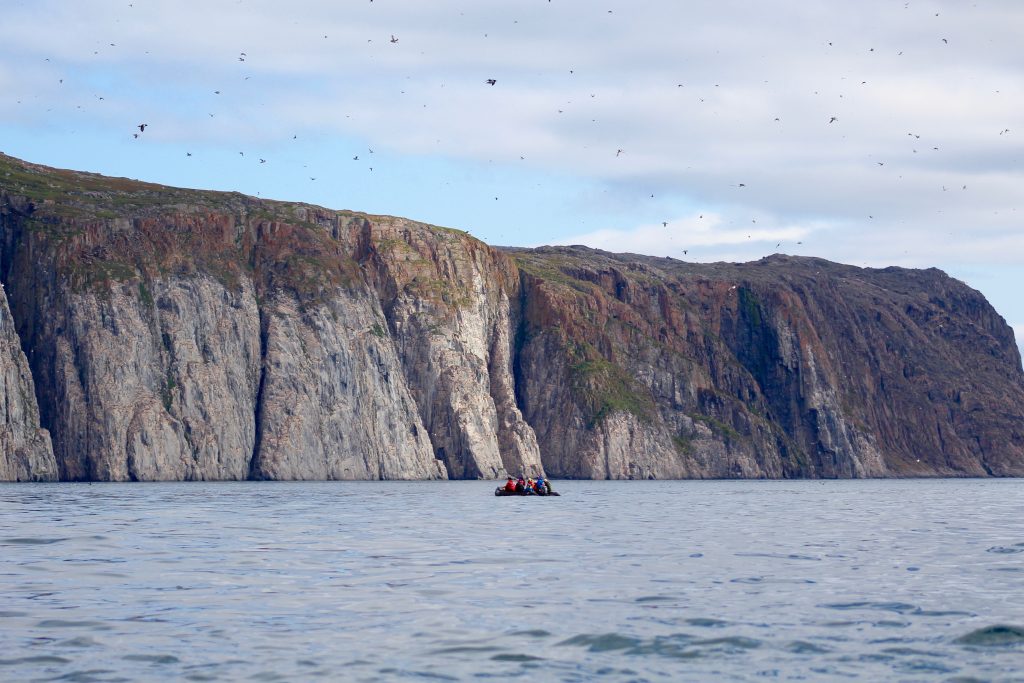Nunavut sees a bump in outside visitors in 2018, according to new numbers
The government's new tourism reports shows that while visitor numbers remain small, they are growing.

From April to Sept. 2018, more than 51,000 people visited Nunavut from outside the territory.
That’s according to Nunavut’s annual tourism report for 2018-2019 from the Department of Economic Development and Transportation, tabled in the legislative assembly earlier this month.
That same group of people spent a total of $271,383,000 on their travel during that time period, including transportation costs. The report does not break down specifically how much money was spent on non-transportation costs.
By comparison, there were an estimated 16,750 non-resident visitors to the territory from May to Oct. 2015, according to that year’s Nunavut visitor exit survey.
The Qikiqtaaluk and Kivalliq regions received the most overall visitors (including visitors from elsewhere in Nunavut) from July to Sept. 2018. The Qikiqtaaluk region had 95,600 visits, with just over half (53.2 percent) of those visits to Iqaluit with a total of $75.1 million spent. Pond Inlet and Pangnirtung were the second and third most visited communities in the region.
In the Kivalliq, Rankin Inlet had 33,600 visits and $68 million in spending, followed by Baker Lake and Arviat.
Cambridge Bay was the most-visited community in the Kitikmeot.
Also in 2018, 3,404 cruise tourists visited Nunavut over a two and a half month period. Cruise operators spent $388,351 to access community services, according to the report.
But weather and ice conditions affected half of the cruise visits planned for the territory that year.

The department received data from eight cruise operators on 23 voyages that stopped in Nunavut from July to Sept. 2018.
Just over half, or 59 percent, of the passengers in the sample who disembarked in Nunavut visited Pond Inlet. Iqaluit was the second-most visited community for cruise ships with 8.3 percent, followed by Qikiqtarjuaq with 6.1 percent and Grise Fiord with 5.9 percent.
Not only did cruise ship visitors to Pond Inlet spend a total of $246,565, but those visitors also accounted for 100 of the 189.5 hours spent by cruise ship visitors in Nunavut, according to the report.
Cambridge Bay, Gjoa Haven, Kimmirut and Kugluktuk did not receive any cruise ship visits in 2018. According to the report, both Cambridge Bay and Gjoa Haven were expecting seven visits, which were all cancelled due to weather.
The report notes that Cambridge Bay and Gjoa Haven were negatively impacted by these cancelled visits, which represents a collective loss of about $25,300.
Most of the information included in the report comes from the department’s visitor exit survey from 2018, which surveyed cruise ship operators and other visitors to the territory last year.
In 2018, the GN responded to community concerns from Pond Inlet and Clyde River about cruise ships going into traditional harvesting areas. According to the report, the GN communicated with the Association of Arctic Expedition Cruise Operators and all cruise ship operators complied by avoiding these areas.
It also notes that although tourism is driven by private sector development, it requires government support to flourish. In Nunavut’s case, this means training and hiring Nunavummiut to work in tourism.
“Prominent among these challenges is the absence of a suitable labour pool that is interested and trained in different elements of the tourism sector. Without a pool of trained, certified employees, opportunities in the tourism industry remain unrealized potential. Training has long been a recognized need for the tourism sector in Nunavut,” the report states.
Nalunaiqsijiit, the Government of Nunavut’s Inuit Cruise Training Initiative, trains 12 Inuit per year to work on board cruise ships as expedition team members, the report states.
According to the report, all of the GN’s current tourism surveyors are Inuit.
“Historically, tourism data collection in the territory has been weak, leading to uncertainty regarding the true size of the industry and its contributions to Nunavut’s economy,” the report states.
The department also funded a total of 115 projects related to tourism in 2018, totalling $1,272,822.
A few of the highlighted projects include:
- Nunatta Sunakkutaangit Museum, Voices from Nunavut exhibition: $50,100
- Jerry Cans tour: $48,383
- Hamlet of Igloolik, Creation of Igloolik Arts: $81,785
- Artcirq, Unikkaaqtuat production: $99,872
- Nunavut Development Corporation and the Winnipeg Art Gallery’s new store: $225,000 over three years